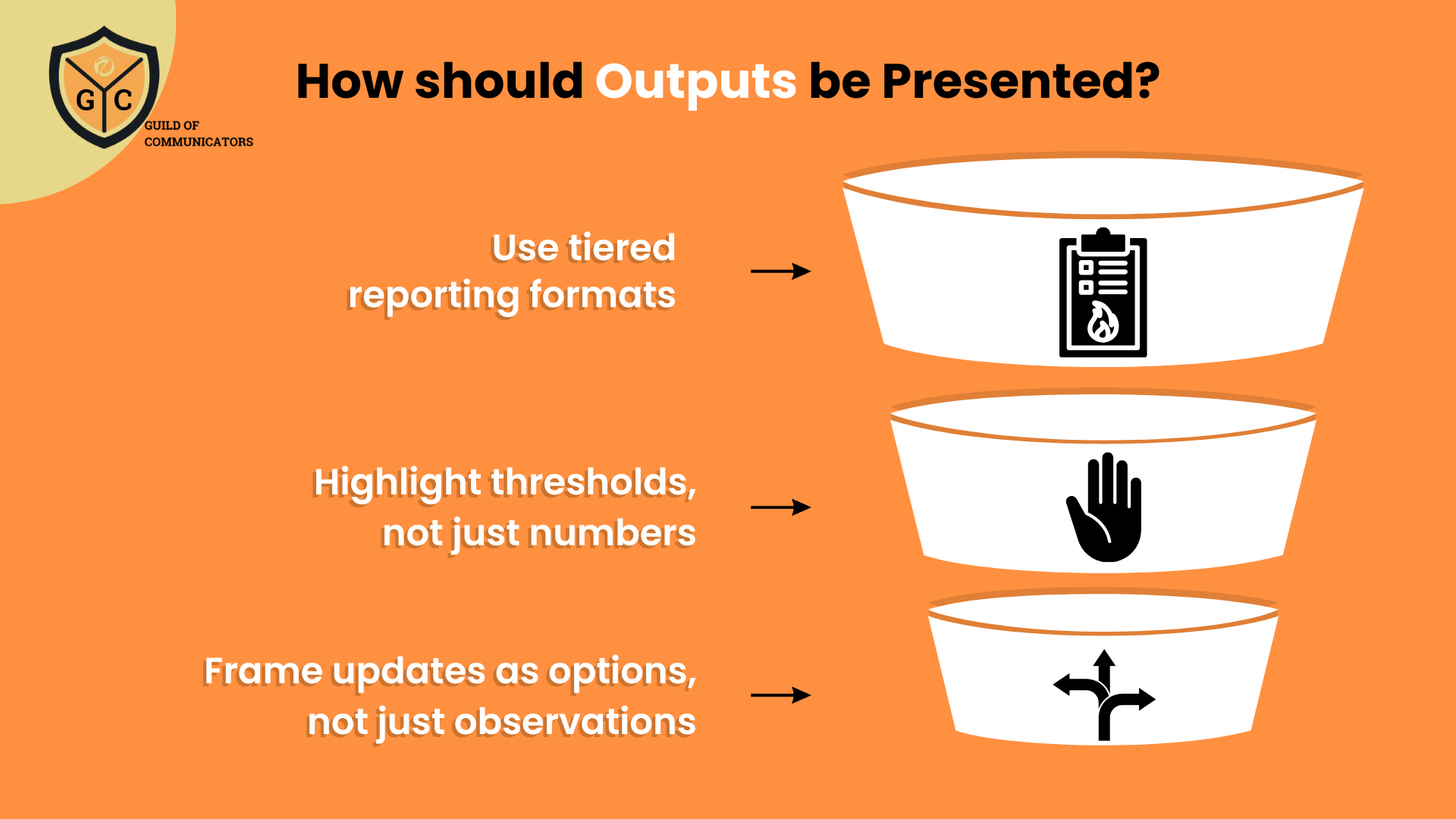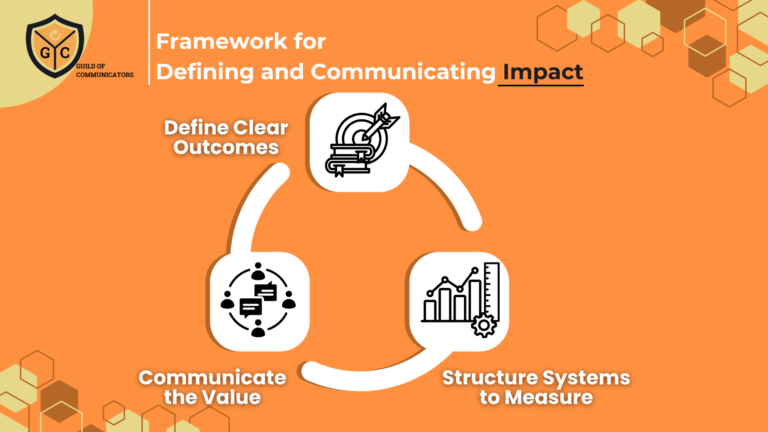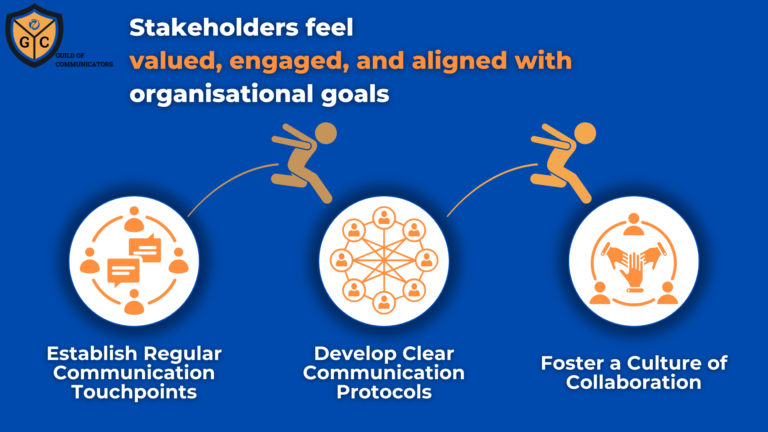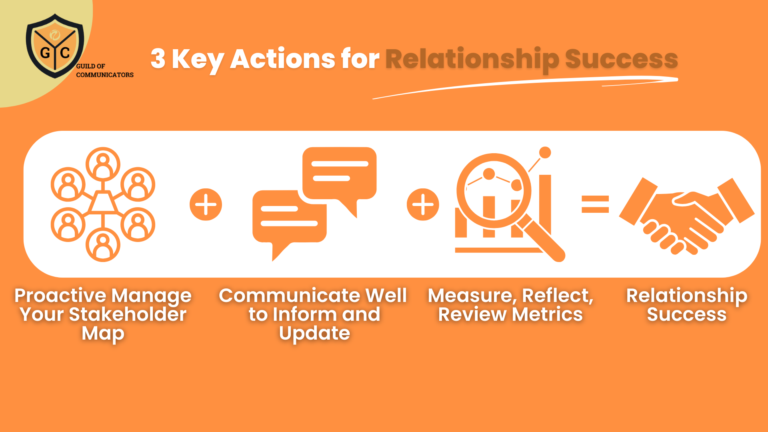Reporting to management and stakeholders is not just the closing step in issues management. It is a structural necessity during the monitoring stage.
While many communicators focus on escalation once an issue becomes active, the earlier stage, typically when signals are still weak, requires equal discipline.
For communicators, this stage presents a distinct challenge. Monitoring without reporting creates blind spots for decision-makers. Reporting without context can undermine credibility. Navigating both requires a clear framework for identifying, structuring, and presenting information. Done well, it positions the communicator as a proactive professional who brings clarity before urgency takes hold.
The Communicator’s Role in Monitoring
Decisions about how to manage an issue often involve multiple internal stakeholders. However, the responsibility for monitoring and anticipating sits squarely with the communicator.
It is the communicator’s role to identify weak signals, filter them into what matters, raise points of concern, and secure the resources—time, budget, or cross-team collaboration—needed to track developments.
Part of this responsibility includes creating a monitoring plan. This should specify reporting structures, define what will be measured, and set clear timelines for when updates are delivered. Without this discipline, monitoring becomes a passive task rather than a structured process that feeds into decision-making.
In practice, this means communicators need to establish routines: who is updated, how often, in what format, and with what information. This clarity ensures that monitoring does not operate as an invisible background task, but as an active contributor to organisational preparedness.
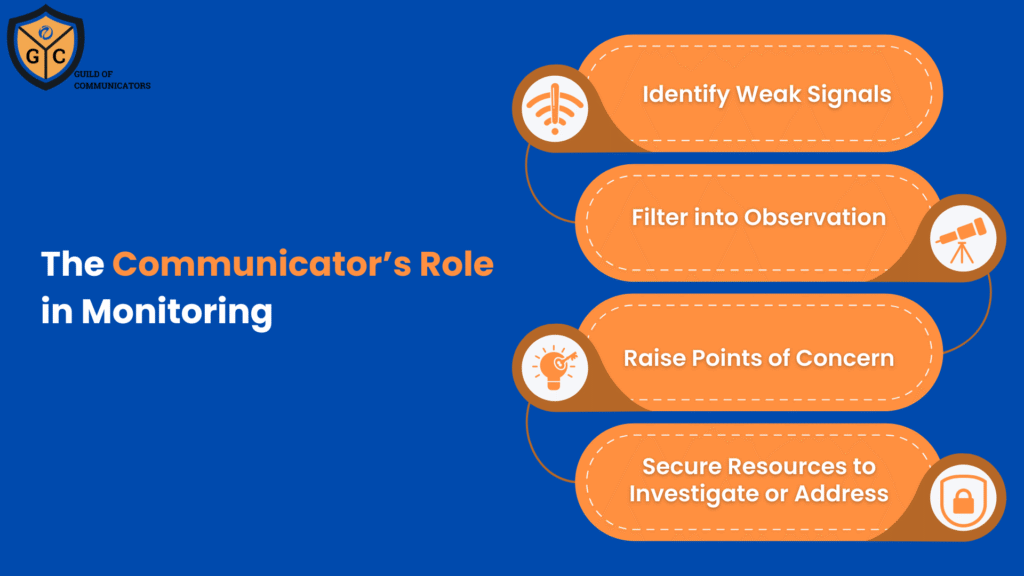
Risks of Working in a Silo
Monitoring an issue without sharing updates is a common mistake. Communicators may assume that reporting is only necessary when an issue escalates. This assumption can have serious consequences.
When concerns, updates, or numbers are not shared, issues risk being deprioritised. Management may assume the matter is under control or not worth attention. By the time it becomes urgent, it is harder to secure resources or gain alignment. Worse, silence can create the perception that communicators either missed the signals or lacked the confidence to raise them.
This is not about overwhelming leadership with unnecessary detail. It is about ensuring that issues remain visible at the right level. Regular updates, however brief, create a shared awareness that prevents complacency and builds organisational readiness.
Building Real-Time Metrics for Monitoring
Reporting during the monitoring stage benefits from metrics that capture movement and signals, not just outcomes.
These differ from the metrics used once an issue is being actively managed. The aim is to provide early indicators rather than retrospective results.
Three examples of useful monitoring metrics include:
- Volume and frequency of mentions – Tracking how often the issue appears in media, social channels, or stakeholder conversations, even if sentiment is not yet strongly negative.
- Stakeholder references – Recording when the issue is raised by regulators, partners, employees, or community groups, signalling growing relevance.
- Internal resourcing hours – Logging the amount of time teams are already spending on monitoring, which indicates the organisational cost even before formal action is taken.
These metrics are valuable because they quantify weak signals in a way that leadership can understand. They demonstrate that even at the monitoring stage, issues have weight and demand structured attention.
The Case for Explaining Urgency
Communicators also need to account for how leaders interpret information. Reporting is not just about numbers; it is about framing priority, urgency, and importance in ways that align with human decision-making tendencies.
Several cognitive tendencies make this difficult:
- Normalcy bias – Decision-makers may underestimate risk, assuming the present will continue without disruption.
- Optimism bias – Leaders may overestimate the likelihood of positive outcomes, delaying action until problems are undeniable.
- Recency effect – Recent events or crises may overshadow emerging issues, even if the new signals are more critical.
By recognising these tendencies, communicators can adapt their reporting. Instead of simply presenting metrics, they can explain why action now prevents greater disruption later. Linking monitoring data to urgency supports more proactive leadership responses and positions communicators as trusted advisors.
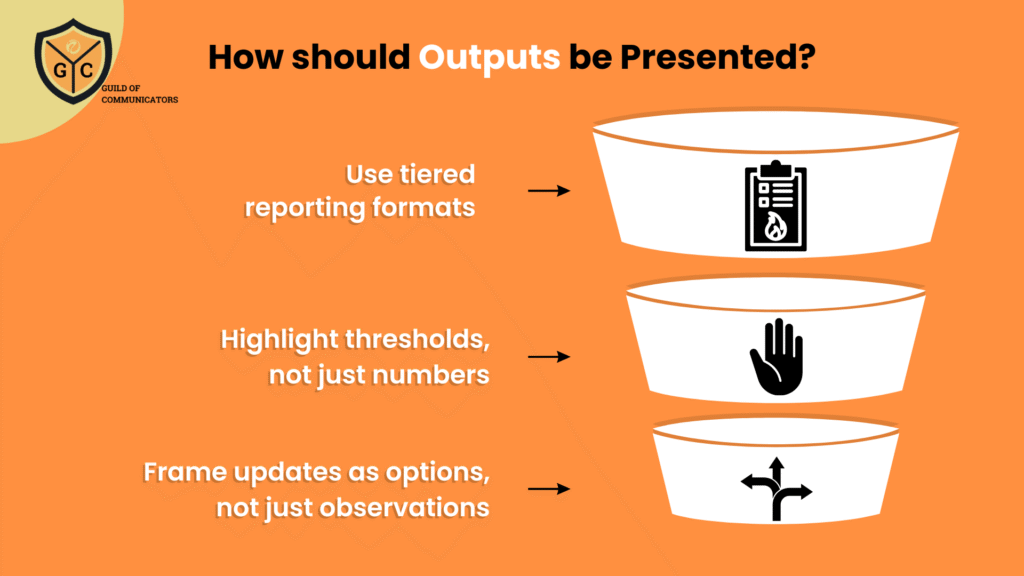
Practical Steps for Reporting to Stakeholders
Monitoring is often seen as passive, but effective reporting transforms it into a proactive discipline. By structuring updates, building real-time metrics, accounting for psychological tendencies, and presenting outputs with clarity, communicators can elevate their role.
Once metrics and framing are in place, the question becomes: how should outputs be presented? For communicators, adopting a structured approach helps ensure reporting is clear, actionable, and credible. Three practical steps include:
- Use tiered reporting formats – Provide executives with short summaries highlighting key risks and priorities, while offering cross-functional peers more detailed updates where collaboration may be needed.
- Highlight thresholds, not just numbers – Rather than reporting raw data, show when an issue has crossed a threshold that requires attention. For example, a sudden increase in mentions or a shift in stakeholder references can signal that the monitoring stage is moving toward active management.
- Frame updates as options, not just observations – Communicators should suggest what the organisation might do next, even if it is only to continue monitoring. This ensures reporting is tied to decision-making rather than being perceived as background noise.
These steps support credibility by showing that issues are being monitoring effectively as well as being translated from insights into actionable updates.
For communicators, this is both a challenge and an opportunity. The challenge lies in avoiding complacency and ensuring that monitoring translates into organisational awareness. The opportunity lies in demonstrating value to leadership by making issues visible before they escalate.
The communicator who reports with discipline during monitoring does more than track signals; they shape how their organisation prepares for what comes next.
*****
Ready to elevate your communications career? The Guild of Communicators is your essential hub for professional growth, offering a vibrant community and best-in-class resources.
- Connect Membership: Ideal for early-career communicators seeking a supportive peer network, over 300 foundational and intermediate courses, and monthly interactive group sessions.
- Elevate Membership: For ambitious professionals, this tier includes premium frameworks, immersive live online workshops, dedicated career coaching, and mentorship with senior industry leaders.
Discover your path to impact and accelerated career growth.
Join the Guild of Communicators today at www.gocommunicators.com.
(For students: If you’re a student, undergraduate or postgraduate, explore our special student referral programme to lock in your membership fee for the second year! Drop us an email to find out more)
——-
Subscribe to join over 1500+ communicators and brands getting value every Tuesday while reading A Communicator’s Perspective, our weekly newsletter.

